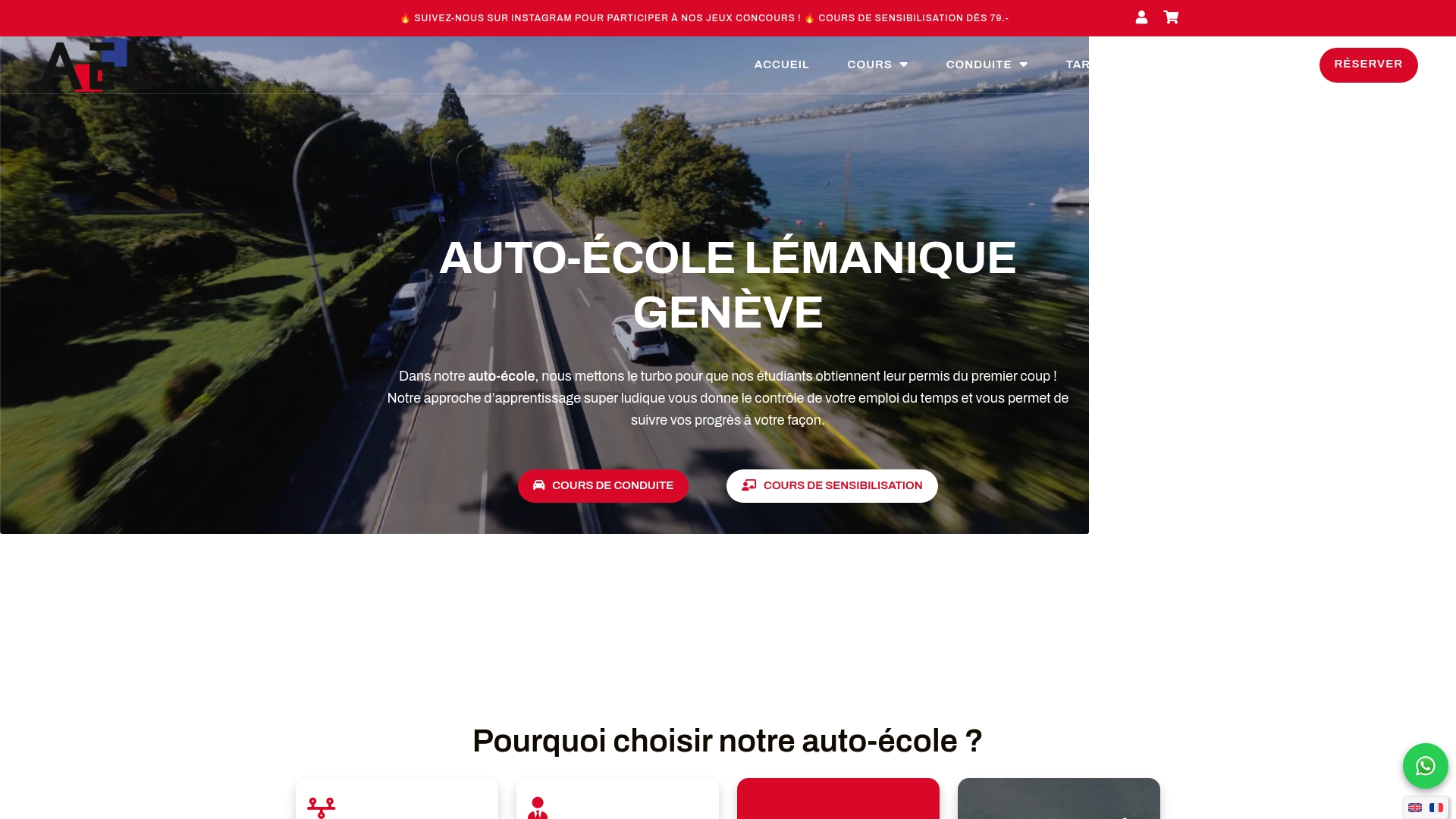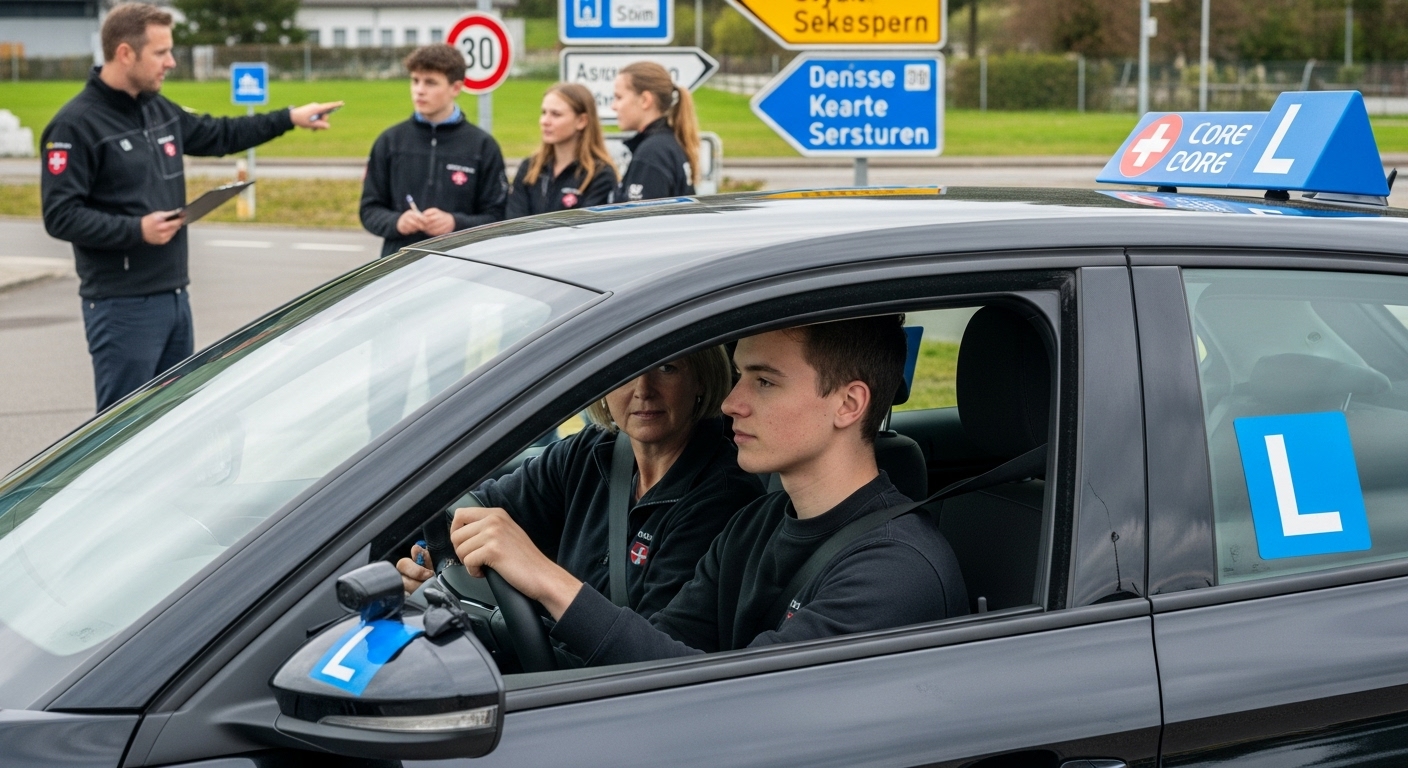Obtaining a Swiss driver’s license is more than just a formality. It involves a structured process where every detail counts and the practical test lasts precisely 45 minutes. Yet many still believe that mastering the road is enough to pass. The real difference lies in an in-depth understanding of the test format and safety rules, often overlooked but absolutely decisive on test day. Find out more about Swiss driving test examples for effective preparation.
Table of contents
- 1: Understanding the format of the Swiss driving test
- 2: Examples of common theoretical questions
- 3: Practical driving test scenarios
- 4: Road safety standards for the Swiss driving test
- 5: Tips for preparing for the theory test
- 6: Tips for passing the driving test
- 7: Useful resources and preparation courses
Quick summary
| Advice | Explanation |
|---|---|
| Understanding the two parts of the Swiss driving test | The test consists of a theoretical test and a practical test, both of which are essential for obtaining a driving license. |
| Prepare with the right resources | Use preparation manuals, applications and courses to maximize your chances of success. |
| Practice common scenarios | Familiarize yourself with the situations encountered during the practical test, so you can react more effectively on the big day. |
| Strict compliance with safety standards | Demonstrate your understanding of road safety rules, essential for passing the test. |
| Managing exam stress | Stay calm and focused, because stress management is crucial to successful performance. |
1: Understanding the format of the Swiss driving test
Obtaining a Swiss driving license is a structured process that requires a precise understanding of its various formats and requirements. Every applicant should be aware that the test is divided into two essential parts: the theory test and the practical test.
Special features of the exam format
Key points to understand about the exam format include:
- The practical test lasts 45 minutes for categories A and B.
- The assessment covers several real-life driving skills
- Theory and practice are graded according to precise, objective criteria
Since April 1, 2003, the Swiss driving license has been issued in a standardized format, in line with European standards. This official document is now issued in credit card format, simplifying its use and recognition.
Practical test
The theory test assesses your knowledge of traffic rules, road signs and safety behavior. It usually includes a multiple-choice test in which you demonstrate a thorough understanding of Swiss traffic regulations.
Theoretical examination
The practical exam tests your actual driving skills. The experts assess your ability to handle different traffic situations, respect safety rules, and adopt responsible, anticipatory driving.
To succeed, it’s crucial to be well prepared and to understand every aspect of the Swiss driving test. Learning more about our preparation courses can help you approach these tests with confidence and method.
2: Examples of common theoretical questions
The theory test for the Swiss driver’s license accurately assesses your knowledge of traffic rules and road safety. According to official resources, candidates must master several essential areas.
Driving questions
The most frequently asked questions concern crucial driving issues:
- Road signs and how to understand them
- Priority and traffic rules
- Safety and braking distances
- Behavior in the event of an emergency or accident
A typical Swiss driving test question might be: “What is the minimum distance you must keep from a vehicle in front of you? The answer depends on a number of factors, including speed, weather conditions and road type.
Questions about traffic situations
In the category of traffic situations, we often find questions about :
- Driving on roundabouts
- Behavior at crosswalks
- Overtaking rules
- Driving in adverse weather conditions
Each question is designed to assess not only your theoretical knowledge, but also your ability to apply these rules logically and safely. Preparation is essential to pass this Swiss driving test.
Discover our preparation resources to train effectively and increase your chances of success. Methodical learning will enable you to master these theoretical questions with confidence and precision.
3: Practical driving test scenarios
The Swiss driving license practical test represents a crucial moment when your actual driving skills are assessed. Since 2024, this exam has lasted 45 minutes and tests your ability to handle different traffic situations.
Points assessed
The experts will take a close look at several fundamental aspects:
- Strict compliance with traffic regulations
- Anticipating potentially dangerous situations
- Responsive and calm under pressure
- Precise technical maneuvers
The most frequently encountered scenarios include complex situations such as :
- Crossing intersections with traffic lights
- Slot parking
- Freeway driving
- Safe lane changes
Each candidate must demonstrate not only technical mastery of the vehicle, but also a deep understanding of safety issues. The expert will assess your ability to make rapid, appropriate decisions.
Critical evaluation elements
Critical evaluation points include your positioning on the road, managing your mirrors, signalling your intentions and communicating with other road users.
Consult our practical training programs to prepare yourself effectively for these different scenarios and significantly increase your chances of passing the exam.
4: Road safety standards for the Swiss driving test
During the practical test for the Swiss driver’s license, road safety standards are rigorously assessed. According to official regulations, each candidate must demonstrate a thorough understanding of and strict adherence to safety principles.
Items assessed for safety standards
Essential safety points assessed during the exam include:
- Compulsory wearing of seat belts
- Consistent compliance with speed limits
- Precise signage for changes of direction
- Vigilance towards vulnerable road users
Risk prevention is at the heart of the assessment. The expert will take a close look at your ability to anticipate potentially dangerous situations and react appropriately.
Behaviours to avoid when taking the Swiss driving test
Critical behaviors that can lead to failure include:
- Incorrect use of mirrors
- Lack of communication with other drivers
- Unsafe line crossings
- Inadequate management of safety distances
Every move counts. The slightest safety error can jeopardize your success. The experts are looking for a candidate who can demonstrate responsible, calm and perfectly controlled driving.
Discover our specialized training courses to prepare you effectively for these safety requirements and increase your chances of success on the Swiss driving test.
5: Tips for preparing for the theory test
Passing the theoretical Swiss driving test requires methodical and strategic preparation. The key to success lies in a structured approach that combines several learning techniques.
Preparation techniques
Here are the essential strategies for maximizing your chances:
- Establish a regular study schedule
- Use official preparation resources
- Practice exams
- Understand reasoning logic, not just memorize it
According to road training experts, a thorough understanding of traffic rules is essential. Don’t just learn by rote, try to understand the logic behind each rule.
Use the right tools
Recommended tools for your preparation include :
- Exam simulation applications
- Official highway code manuals
- Online preparation courses
- Explanatory visual aids
Effective learning also requires you to manage your stress and develop a method of thinking quickly and accurately. Every driving test question tests not only your knowledge, but also your ability to make logical decisions in a given situation.
Find out more about our theory training programs, which will provide you with personalized support to help you pass your exam.
6: Tips for passing the driving test
Passing the practical driving test requires rigorous mental and technical preparation. According to the latest official regulations, the test now lasts 45 minutes, offering a more comprehensive assessment of your skills.
Techniques for greater chances of success
Key strategies for maximizing your chances include:
- Perfect command of basic driving techniques
- Develop calm, controlled confidence
- Regular practice in a variety of conditions
- Understand the expert’s precise expectations
Stress management is a crucial part of your preparation for the Swiss driving test. Learn to maintain your composure and concentration, even in the face of unexpected situations. The expert will assess your ability to react appropriately and safely.
Priority items
During the tests, the priority points of attention will be :
- Systematic checking of mirrors
- Clearly communicating your intentions
- Scrupulous compliance with traffic regulations
- Smooth, anticipatory driving
Every detail counts. A poorly controlled gear change, approximate positioning or lack of attention can compromise your success. Technical precision combined with a calm approach will be your best asset.
Discover our specific training programs that will prepare you effectively for the practical requirements of the Swiss driving test.
7: Useful resources and preparation courses
Effective preparation for the Swiss driving test requires appropriate, targeted resources. According to official cantonal information, candidates have several options for optimizing their chances of success.
Indispensable resources
Must-have resources include :
- Official highway code manuals
- Exam simulation applications
- Theoretical and practical courses
- Interactive digital media
The importance of resource diversity should not be underestimated. Every candidate learns differently, so it’s crucial to vary preparation media and methods.
Preparation tools
Recommended tools include :
- Videos explaining traffic rules
- Specialized discussion forums
- Training sessions with experienced instructors
- Dedicated e-learning platforms
Some organizations offer specialized courses for candidates with special needs, including accommodations for people with disabilities or learning difficulties.
Summary of examples of Swiss driving tests
Here’s a table summarizing the key points covered in the article on Swiss driving test examples and the best preparation for success at each stage.
| Main theme | Essential details |
|---|---|
| Swiss driving test format | Consists of a theoretical part (MCQs on the highway code) and a practical part (45-minute driving test, cat. A & B) |
| Frequently asked theoretical questions | Traffic signs, priorities, safe distances, driving in bad weather, emergencies, appropriate behavior |
| Practical scenarios put to the test | Intersections with traffic lights, parallel parking, freeway driving, safe lane changes |
| Road safety standards assessed | Seatbelts, respect for speed limits, good signage, anticipation, risk management |
| Strategies to prepare for the theory exam | Regular planning, official resources, mock exams, logical understanding of rules, apps and visual aids |
| Tips for passing the practical test | Technical mastery, stress management, varied practice, anticipation, mirror checks, clear communication |
| Recommended resources for success | Official manuals, applications, courses (theory/practice), videos, experienced instructors, e-learning platforms |
Discover our personalized training programs to help you obtain your driver’s license.
Take the next step to pass your Swiss driving test
In our 7 examples of Swiss driving tests, you’ve discovered just how rigorous and strategic preparation can be. You can feel the stress rising at the thought of coming across tricky questions on the theory test, or having to deal with a complex scenario on the day of the practical test. Many students identify with this apprehension in the face of the unknown and the official format of the Swiss test.
Don’t let uncertainty slow down your progress To give you every chance of succeeding in your Swiss driving test, Auto-École Lémanique offers tailor-made support that precisely targets the points raised in the article, from learning safety rules to practicing practical situations. Our experienced instructors will guide you from theory to practice, with advice adapted to each stage. Find out more about our courses, with detailed descriptions and testimonials to build your confidence.

Register now with Auto-École Lémanique and gain access to personalized training tailored to your needs. Take advantage of our availability and the latest teaching aids to turn your weaknesses into real strengths. Don’t wait any longer to take the plunge and book an appointment on our website to start your journey towards success on the Swiss driving test.
Frequently asked questions
What are the different test formats for obtaining a Swiss driver’s license?
The Swiss driving test consists of two main parts: the theory test, which tests your knowledge of traffic regulations, and the practical test, which assesses your driving skills in real-life situations.
How long does the practical test for a Swiss driver’s license last?
The practical test generally lasts 45 minutes for categories A and B, during which the candidate must demonstrate his or her driving skills in a variety of traffic situations.
How can I prepare effectively for my driving test?
To pass the theoretical Swiss driving test, we recommend setting up a study schedule, using official resources and practicing with mock exams to gain a better understanding of the sample questions.
What are the key skills assessed in the practical test?
The Swiss driving test assesses essential skills such as compliance with traffic regulations, anticipation of dangerous situations, precision in maneuvers, and the ability to remain calm under pressure.





